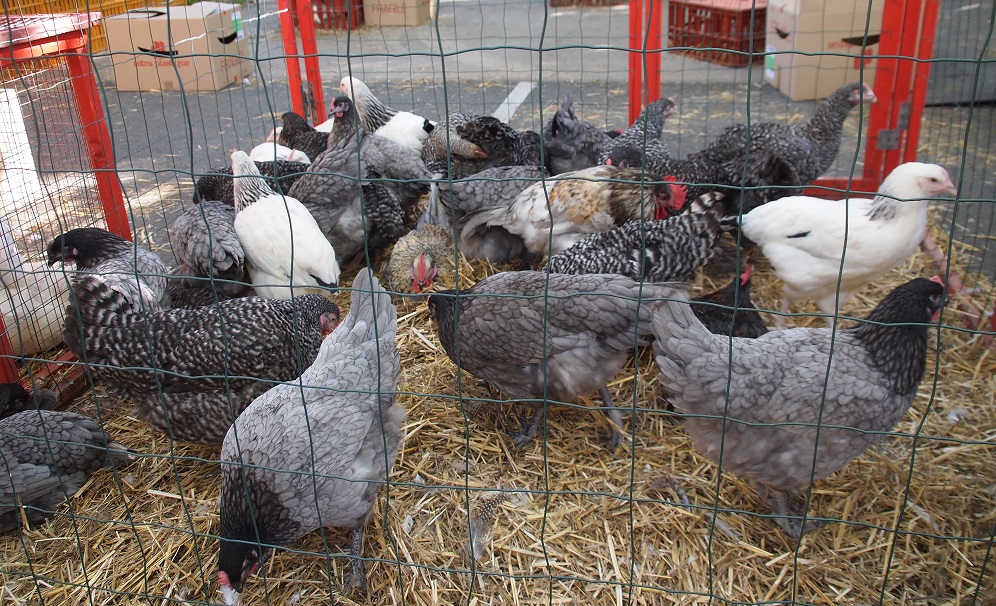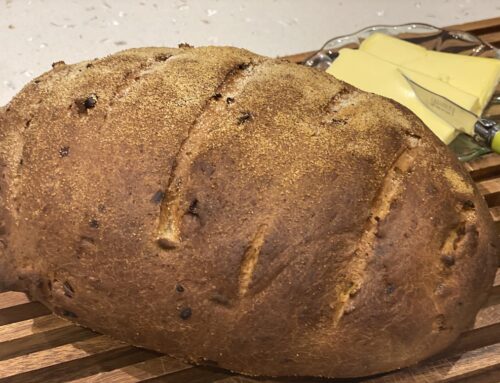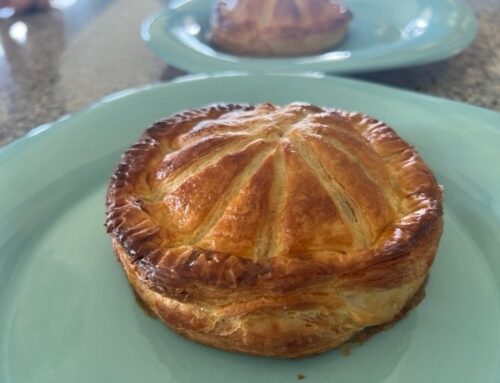The Burgundian Coq au Vin and Boeuf Bourguignon share many similarities. They are both regional Burgundian specialities, they both showcase the famous Burgundian wines, Bresse chickens, pork and Charolais beef. Their method of cookery is very similar as well. When this dish is cooked with one of these Burgundian wines it takes the name of the name of the wine used in the cooking, such as Coq au Chambertin. It seems like a pity to use a Chambertin; so I usually use a Côte de Rhône or an Australian shiraz; if making it with white wine and chicken stock I use a Chardonnay or Riesling and then it is called Coq au Riesling.
The coq au vin is regarded as an ‘elevation of the traditional and simple chicken and wine ragout’, when, with the addition of the lardons, the garnish of small braised onions and sautéed button mushrooms, it becomes well suited for ‘fine company’. When preparing this dish for ‘fine company’ you may like to thicken the sauce, just before serving, with the a classic beurre manié* which will give the sauce a nice gloss as well.
Classic famous dishes such as this one, have various versions appearing in almost all of the classic French cookbooks. Some are more complicated and require more time to cook, however, when a few steps are removed, the dish can be quite simple.
In France, on our Betty B barge, I frequently cooked a simple coq au vin as it was easy to manage in my small barge kitchen, the ingredients readily available and it can be made ahead the day before and reheated. In France they have the very best and most flavourful lardons which I loved to use, plus the tiny onions, I used eschallots, were inexpensive and plentiful. The button mushrooms were always in the markets and the fresh herbs I often grew onboard. You will find my Betty B Barge coq au vin recipe on the website as well as the classic version here.
Sauce thickening : Elizabeth David, forever the purist, and a revered and honoured English cookery writer, and the infamous Julia Child, have given us their very comprehensive recipes and ones I like very much. Thankfully, Elizabeth does suggest that the tradition of thickening the sauce with the blood of the chicken is not necessary to make this a genuine coq au vin! Interestingly neither do not marinate the chicken the night before. Elizabeth does muse over her dilemma of getting the sauce to the right consistency without spoiling the bird by overcooking it. So, she suggests two alternatives. One is to cook the bird whole, and while carving it, reduce the sauce until it thickens or the second option is to half prepare and reduce the sauce first; then cook the bird in portions, in the reduced sauce. For this method, you need to be careful to have enough liquid for the cooking of the chicken, otherwise it may be too dry.
Elizabeth David and Julia Child both liked the cognac flambé as does Anne Willan and Richard Olney, and it definitely adds some theatre in cooking class!
The marinade: Anne Willan, cookbook author and founder of the famous La Varenne Cooking School in Paris and Burgundy, explains that in the country kitchens of regional France, the old cockerels were used in such dishes as this and therefore it needed both the marinade and the slow cooking to tenderise and flavour the ‘coq’.
English chef, James Martin and his food hero, Keith Floyd, both use a marinade. This is not necessary to do today, as the chickens we use are tender and young, so the marinating step is often omitted. I never marinated the chicken on the barge. In my classic coq au vin I do marinate the chicken in the for additional flavour.
Richard Olney, referred to above, is a famous American food writer, who lived for the last 30 years of his life in Provence, who was a contemporary and friend of Julia Child and Elizabeth David, and author of The French Menu Cookbook, voted one of the best of all time by an Observer Food Monthly panel, observes when writing about the coq au vin ‘it is only logical that a bird no more than 2 months old, though perfect for a sauté … should be less satisfactory in a dish whose qualities depend on the flavour and gelatinous material which, over an extended period, may be drawn from the meat into a reduced and concentrated sauce.’ As a compromise, he suggests using leg and thigh pieces, which lend themselves much better to this type of preparation than do whole birds and breasts, and replacing half the wine with a ‘rich gelatinous veal stock’; personally, I always love the addition of a good home-made stock.
You will find countless recipes for the coq au vin, made in the traditional manner with red wine and beef stock and the coq au vin blanc, or coq au Riesling when white wine is used along with chicken stock and sometimes cream.
See my Classic Coq au Vin and my Betty B Barge simpler Coq and Vin







